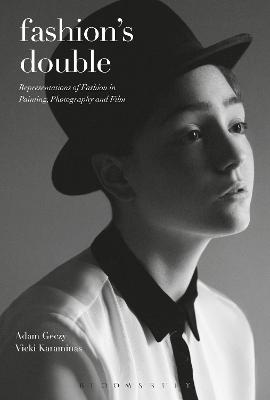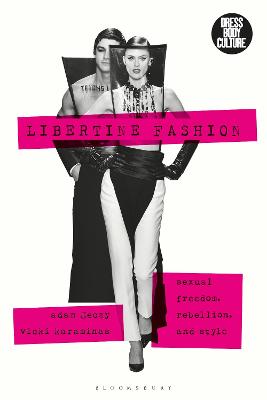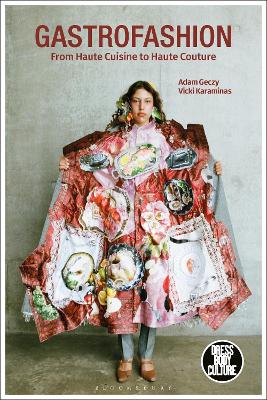Dress, Body, Culture
3 total works
Mere clothing is transformed into desirable fashion by the way it is represented in imagery. Fashion's Double examines how meanings are projected onto garments through their representation, whether in painting, photography, cinema or online fashion film, conveying identity and status, eliciting fascination and desire.
With in-depth case studies including the work of Nick Knight and Helmut Newton, film examples such as The Hunger Games, music video Girl Panic by Duran Duran, and much more, this book analyses the interrelationship between clothing, identity, embodiment, representation and self-representation.
Written for students and scholars alike, Fashion's Double will appeal to anyone studying fashion, cultural studies, art theory and history, photography, sociology, and film.
With in-depth case studies including the work of Nick Knight and Helmut Newton, film examples such as The Hunger Games, music video Girl Panic by Duran Duran, and much more, this book analyses the interrelationship between clothing, identity, embodiment, representation and self-representation.
Written for students and scholars alike, Fashion's Double will appeal to anyone studying fashion, cultural studies, art theory and history, photography, sociology, and film.
Shortlisted for the Association of Dress Historians Book of the Year Award, 2021
Libertine practices have long been associated with transgression and social deviance. This innovative book is the first to focus fully on the relationship between libertinism as a social phenomenon and as a form of fashion. Taking the reader from early modernity to the present day, Adam Geczy and Vicki Karaminas reveal how the connection between clothing and the taboo, the erotic, and the forbidden is at the heart of "libertine fashion".
Moving from the decadent courts of Charles II and Louis XV to the catwalks of the 21st century, Libertine Fashion examines literary and sartorial figures ranging from the Marquis de Sade and Lord Byron to Oscar Wilde, Josephine Baker, Colette, and Madonna. Focusing on libertinism as a sartorial practice and identity, this book traces the genealogy of the concept through the proto feminists of the English Reformation, the hedonistic decadents of the fin de siècle, and the Flappers of the Roaring 20s. The historical arc traverses the 1970s era of punk and glam, the shapeshifting personae of David Bowie, and the “disciplinary regimes” of Jean-Paul Gaultier.
Looking at libertine practices and appearances with fresh eyes, this bracing and original book affords many new insights into transgressive style, and of the relationship between sexuality and clothing. Accessible and thoroughly researched, Libertine Fashion uses a multidisciplinary approach that draws on historical literature, film, fashion, philosophy, and popular culture. Offering a historical and philosophical grounding in contemporary forms of identity and dress, it is essential reading for students and scholars of fashion, gender, sexuality, and cultural studies.
Libertine practices have long been associated with transgression and social deviance. This innovative book is the first to focus fully on the relationship between libertinism as a social phenomenon and as a form of fashion. Taking the reader from early modernity to the present day, Adam Geczy and Vicki Karaminas reveal how the connection between clothing and the taboo, the erotic, and the forbidden is at the heart of "libertine fashion".
Moving from the decadent courts of Charles II and Louis XV to the catwalks of the 21st century, Libertine Fashion examines literary and sartorial figures ranging from the Marquis de Sade and Lord Byron to Oscar Wilde, Josephine Baker, Colette, and Madonna. Focusing on libertinism as a sartorial practice and identity, this book traces the genealogy of the concept through the proto feminists of the English Reformation, the hedonistic decadents of the fin de siècle, and the Flappers of the Roaring 20s. The historical arc traverses the 1970s era of punk and glam, the shapeshifting personae of David Bowie, and the “disciplinary regimes” of Jean-Paul Gaultier.
Looking at libertine practices and appearances with fresh eyes, this bracing and original book affords many new insights into transgressive style, and of the relationship between sexuality and clothing. Accessible and thoroughly researched, Libertine Fashion uses a multidisciplinary approach that draws on historical literature, film, fashion, philosophy, and popular culture. Offering a historical and philosophical grounding in contemporary forms of identity and dress, it is essential reading for students and scholars of fashion, gender, sexuality, and cultural studies.
Gastrofashion from Haute Cuisine to Haute Couture
by Adam Geczy and Vicki Karaminas
Published 3 November 2022


